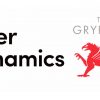Photo: Kenwood KDC-MP6025 head unit
With so many car head units (in-dash receivers) to choose from, how do you pick the right one? Answering the questions below will help you narrow down your choices to get the right stereo for you.
What fits your car?
The first thing to do is make sure you choose a stereo that fits perfectly in your dash. That part’s easy — just go to Crutchfield.com’s Outfit My Car and enter your vehicle information. This will filter out the options that don’t fit in your car. Plus, they’ll let you know about any necessary installation kits, instructions and special adapters you may need.
What do you want to listen to?
Answering this question is the next step in selecting the right head unit / CD receiver. Knowing which options are “must-haves” will help you narrow your search and focus on the features important to you. These days you have a lot of listening options to choose from. Here’s a quick rundown of what to look for.
- FM radio: Radios with a low FM sensitivity do a better job of pulling in radio signals. An FM sensitivity of 8 to 12 dBf is considered very good. Some stereos use digital processing to clean up the analog radio signal, so the music is clear and free of static. Be sure to look for this detail in the stereo’s description if a better-than-most AM/FM radio is high on your list.
- HD Radio™: The world of broadcast radio is entering the digital age. Radio stations broadcasting digital signals are becoming more and more prevalent. To gain the benefits of static-free reception and better sound quality, your stereo must have an HD Radio tuner, either built-in or as an outboard component. Both options are currently available.
- Regular CDs: Today’s in-dash car CD players will play copies of your favorite CDs or home-made compilations on CD-Rs and CD-RWs. One differentiating specification to look for, however, is a stereo’s CD signal-to-noise ratio — the higher the rating in decibels (dB), the cleaner the CD playback will sound.
- MP3, WMA, or AAC discs: Most in-dash car CD players play MP3 discs, and many also play WMA (Windows Media Audio) files and AAC files too. All of these compressed music formats let you put hours of music on a single disc, so you can create a couple of discs with your favorite tunes to leave in the car.
- Music on an iPod®: If you want to be able to control your iPod from your stereo’s faceplate, look for a model that has a compatible iPod control adapter available. An iPod adapter will charge your iPod’s battery and give you the best possible sound quality. If you’d rather use the iPod’s controls, you can skip the adapter and just use the stereo’s auxiliary input (see below).
- Flash memory storage devices: Many in-dash receivers feature USB inputs, so you can load music files onto a thumb drive and have a ready-to-go library of music in your car all of the time. Some receivers feature SD™ card slots too. Check “Hands-on Research” for the specific capabilities of the receiver you’re looking at.
- Other kinds of MP3 players: You need a stereo that has an auxiliary input in order to connect an external device, whether it’s an iPod, an MP3 player, or some other audio source. Most head units today offer either a built-in auxiliary input, or an optional adapter that converts the stereo’s changer port to an audio input. Models with front-panel auxiliary inputs make connecting a portable especially convenient.
- Satellite radio: If you want to add satellite radio to your new car stereo, make sure the stereo you choose is “satellite radio-ready.” That means it can control an optional hideaway satellite radio. Most brands are compatible with radios from either satellite radio company (SIRIUS or XM), but some will only work with one or the other. A few head units include built-in satellite radio tuners.
- DVD playback: Being able to play standard DVDs on your car stereo is a must-have if you want to build a mobile video system. (This is not the same thing as DVD-Audio, a high-resolution audio format currently found in a few high-end in-dash stereos.
Are you a “set it and forget it” listener or are you a “tweaker”?
Listening options are just one of the things you need to consider when shopping for a car stereo. The other pieces of the stereo are the internal power and preamp sound processing.
- Sound controls: Controls beyond basic bass and treble adjustments let you tailor the music to your car’s acoustics. Even if you are the “set it and forget it” type, look for a stereo with treble, bass, and midrange controls — the ability to adjust the midrange will improve the sound of your music. On the other hand, if you’re a “tweaker” who likes to experiment with the sound adjustments, look for a model with a more sophisticated equalizer (such as a parametric EQ), with digital signal processing (DSP), or with digital time correction — these types of sound controls give you total control over the effect of the acoustics in your vehicle.
Are you planning to expand your system?
- Power: Are you keeping your factory speakers? If so, you don’t need to worry about a brand name stereo’s power rating. It’ll drive your factory speakers just fine. If you plan on replacing your factory speakers, however, look for one of the higher-powered models. (Remember, CEA-2006 compliant models will have lower RMS power ratings than non-CEA models.)
- Preamp outputs: Preamp outputs let you connect external amplifiers to power your speakers or a subwoofer. The number or outputs can vary, but you should have at least one set — the higher the output voltage rating, the cleaner the signal. If you know you will be adding a subwoofer, look for a model with a dedicated subwoofer output — this will allow you to adjust the subwoofer volume independently, rather than using the bass control.
- Signal processing: Higher-end stereos have advanced sound processors that can decode surround sound formats like Dolby® Digital and DTS®. Some can also process advanced CODECS such as DVD-Audio.
- Display: If you will be listening to MP3 discs or satellite radio, you may want a display that shows the song, album, and artist information without a lot of scrolling. Enhanced graphics make it easier to see the display at a glance and provide you with more information. They also make it easier to control and adjust the stereo. And some displays let you select their color, for a better match to your dash lighting.

Alpine’s CDE-9870 no-frills display

Alpine’s IDA-X305 has a full-color display inspired by iPod
Why would I buy a higher-priced model?
For many people, a lower-priced stereo will do everything they need. So why should you spend more? More expensive stereos will offer:
- Better sound: Higher-priced stereos often feature upgraded power supplies, improved processors, and more flexible fine tuning. That means better sounding music for you, especially if you’re upgrading the rest of your vehicle’s audio system.
- Easier to use: Advanced controls make it easier to operate the stereo. Touchscreen controls are among the most intuitive to use and give your stereo a futuristic feel. Read more in an article about touchscreen displays.
- “Wow” factor: Top-end stereos offer a more striking visual appearance — multi-color fluorescent displays, customizable graphics, and motorized faceplates, for example.

by Robert Ferency-Viars, Crutchfield.com. All rights reserved. (reprinted with permission, originally posted May 19, 2009)
Get Everything You Need From Crutchfield
- Many new car stereos can control a satellite radio.
- Have an iPod? Check to see if there is an iPod adapter compatible with your new stereo.
- Add a CD changer to your new stereo.
- These installation tools will simplify your car stereo installation.
- Don’t forget the accessories, including face cases, remotes, and test discs.






























